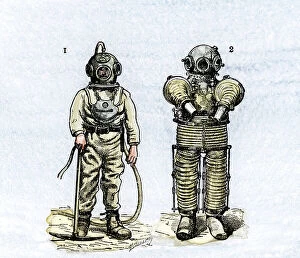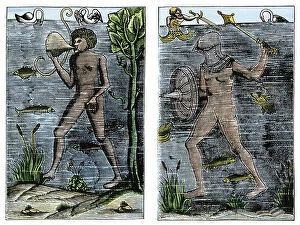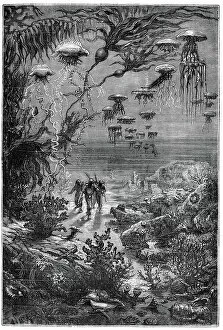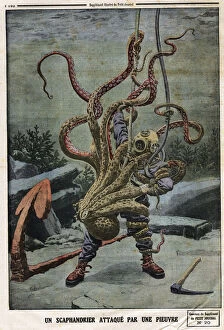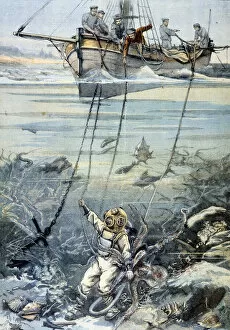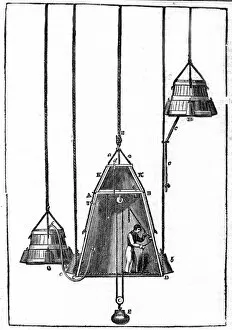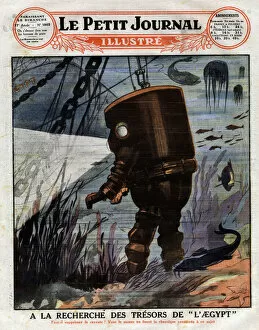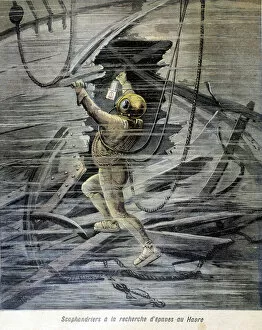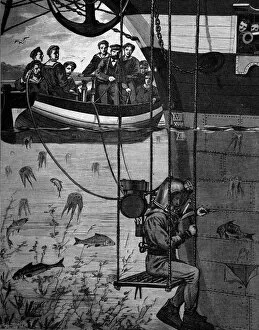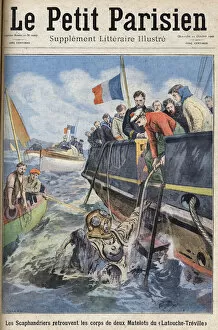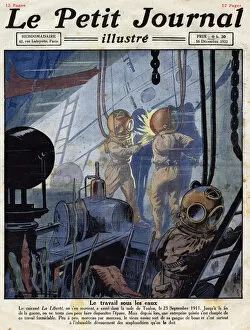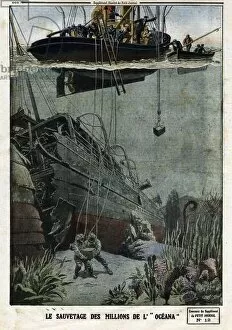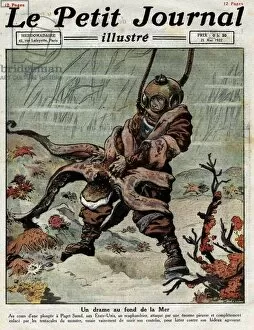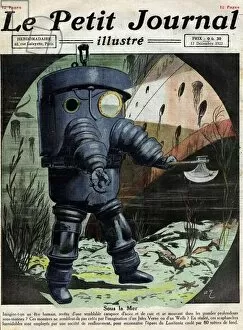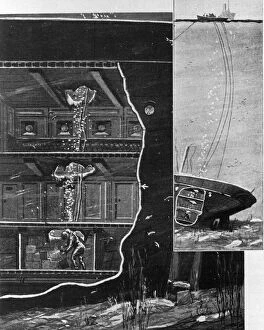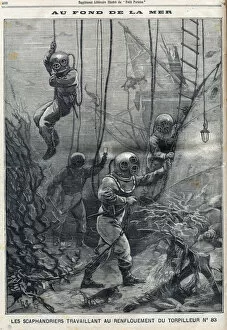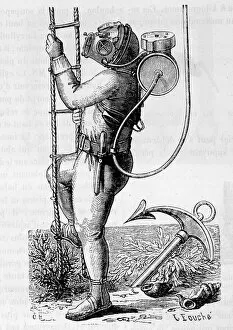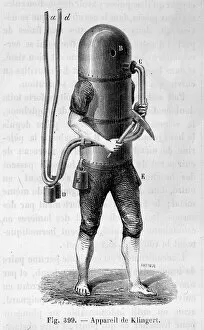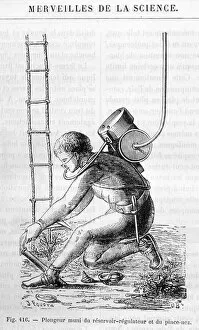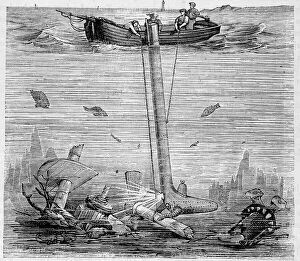Scuba Suit Collection
"Exploring the Depths: A Journey through Scuba Suits" Dive into the fascinating history of scuba suits with these captivating illustrations
All Professionally Made to Order for Quick Shipping
"Exploring the Depths: A Journey through Scuba Suits" Dive into the fascinating history of scuba suits with these captivating illustrations. From Jules Verne's iconic "20, 000 Leagues Under the Seas" to ancient designs, witness the evolution of underwater exploration. In 1870, Jules Verne's imagination brought us an enchanting illustration for his renowned novel. The scuba suit depicted in this engraving transported readers to a world beneath the waves, filled with mysterious creatures and untold treasures. Fast forward to 1912 when "Le petit Journal" showcased an intense encounter between a scaphandler and an octopus. This gripping engraving captured both danger and bravery as man faced off against nature's formidable force. Delving even further back in time, we discover Nicoli Fontana's groundbreaking design from 1499 - a true pioneer in underwater exploration. His first known scaphander, Tartaglia, laid the foundation for future advancements in diving technology. The 15th-century drawing depicting a masked man entering water hints at early attempts to explore beneath its surface. Though primitive by today's standards, it showcases humanity's innate curiosity about what lies beneath. Moving ahead to more recent times, we encounter W. H. James' suit from 1824 – a testament to innovation during that era. Its unique features demonstrate how divers strived for enhanced safety and mobility while exploring uncharted waters. Not limited by borders or language barriers, German adventurers embarked on their own quest for Egyptian treasures using adapted suit systems. Their determination led them on remarkable journeys into unknown depths. Closer to home in Le Havre, France, brave scaphandriers ventured into treacherous wrecks searching for lost relics – as illustrated beautifully here. These unsung heroes risked their lives daily so that history could be preserved and celebrated.





